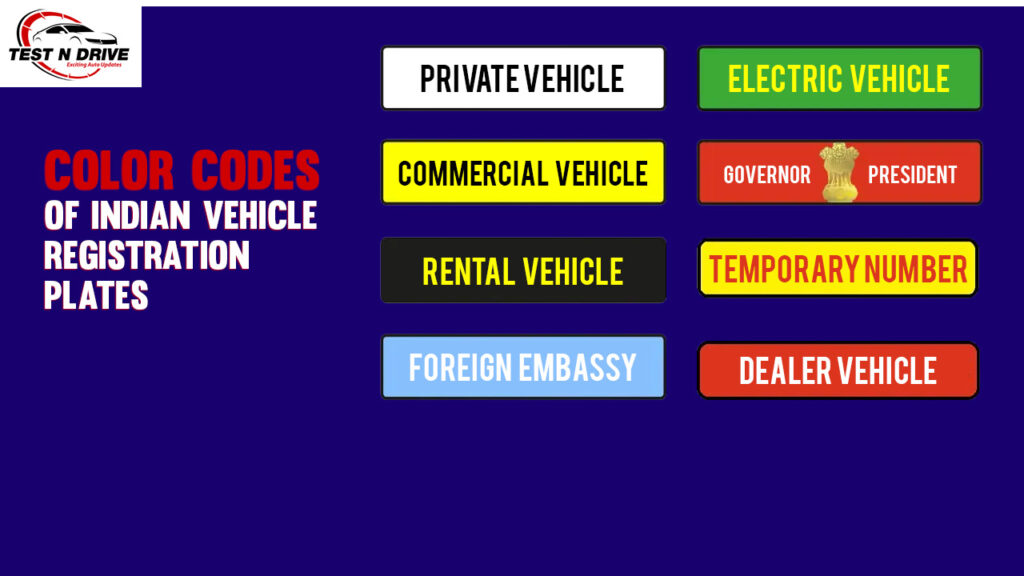According to the Indian Motor Vehicles Act, 1988, all motorized vehicles on Indian roads need to be registered with the RTO and display a license plate (Number plate). There are several different kinds of Indian vehicle registration number plates.
Therefore, unregistered vehicles are in direct violation of the act, which may result in severe penalties. Color codes of Indian vehicle registration number plates are available in five different color schemes.
- Private vehicle license plates feature black lettering on a white background.
- Commercial vehicles have black lettering on a yellow backdrop, such as taxis, buses, and Lorries.
- A vehicle rental indicates by yellow lettering on a black background. A registration number is a formation of alphabets and digits on a license plate.
The district RTO (Regional Transport Office) issues the license plate, which is necessary to be available in the front and back of the vehicle with lighting.
To clarify, India’s international registration code is IND, and it varies by region.
Deciphering The Indian Vehicle Registration Number Plates
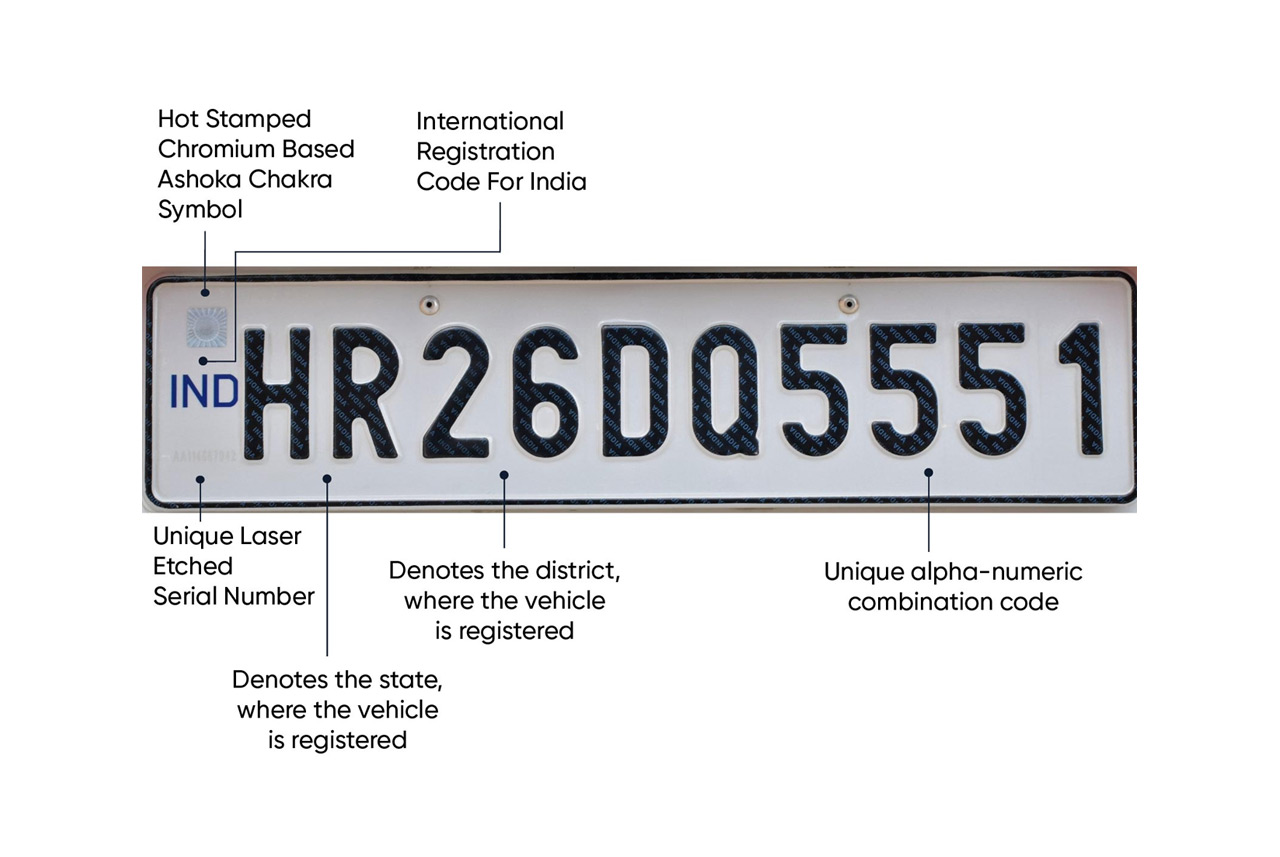
Describing the Number plates in India
- The first two letters on a license plate (DL, KL, HR, and MH, for example) indicate the area or the state of vehicle registration. So, for example, the letters CG will appear on a vehicle registered with the Chhattisgarh RTO.
- The following digits indicate the district of vehicle registration.
- The third portion of the license plate consists of a series of numbers (usually four) specific to the car. At RTO auctions one can purchase vanity numbers, such as 0001, 0786, and 1111, also known as VIP numbers for a premium.
- The last part of the license plate displays the international registration code for India IND.
Types of Indian Vehicle Registration Number Plates
1. White number plate
Private cars are those with black lettering on a white backdrop. These are personal use vehicles only.
2. Yellow number plate
Commercial vehicles such as trucks and taxis get yellow number plate with black text. These vehicles are suitable for a variety of commercial applications. The vehicle’s owner, however, must have a commercial driver’s license.
3. Black number plate with yellow lettering
These self-drive commercial vehicles are available for rent for any commercial purpose without the need for the driver to have a commercial driver’s license.
4. Light blue number plate
One can identify Foreign consulate vehicles by white lettering on a light blue background. For example, UN, CD, or CC are abbreviations for United Nations, Diplomatic Corps, and Consular Corps.
5. Red-colored plate
The President of India and state governors drive in official vehicles that do not have license plates. Moreover, they have the Indian Emblem embossed in gold on a red-colored shield.
6. Number plate with upwards pointing arrows.
Military vehicles have a unique numbering scheme that differs from that of other license plates. Firstly, the numbers are registered with New Delhi’s Ministry of Defense. The first/third character is a Broad Arrow, an upward-pointing arrow famous in the British Commonwealth. Whereas, the two digits after the arrow indicate the year the military purchased the vehicle.
Color Codes of Indian Vehicle Registration Plates
You may have noticed it while driving, but do you know why some vehicles use the same color-text code for the number plate while others use a different one? There are a variety of factors that go into determining which vehicle gets which color number plate.
Color codes of Indian vehicle registration plates are a combination of numbers and letters that gives each vehicle its own identity and allows the vehicle registration with the Regional Transport Office.
1. White Number Plate With Black Lettering
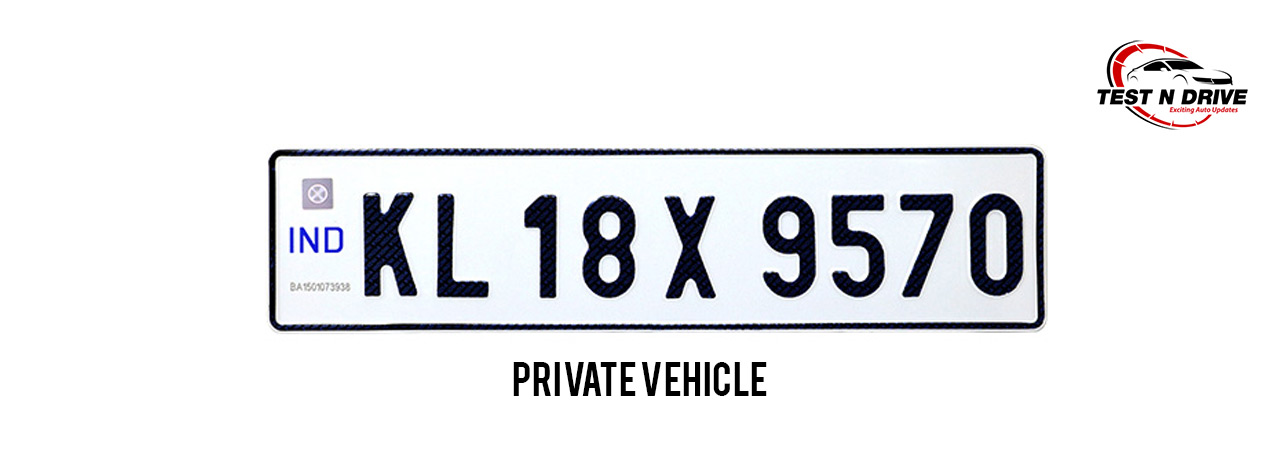
Personal Car Registration
- Non-commercial or private vehicles get the most popular form of a number plate. For commercial purposes, such as transporting goods or ferrying passengers, one can not make use of private vehicles.
2. Yellow number plate with black lettering
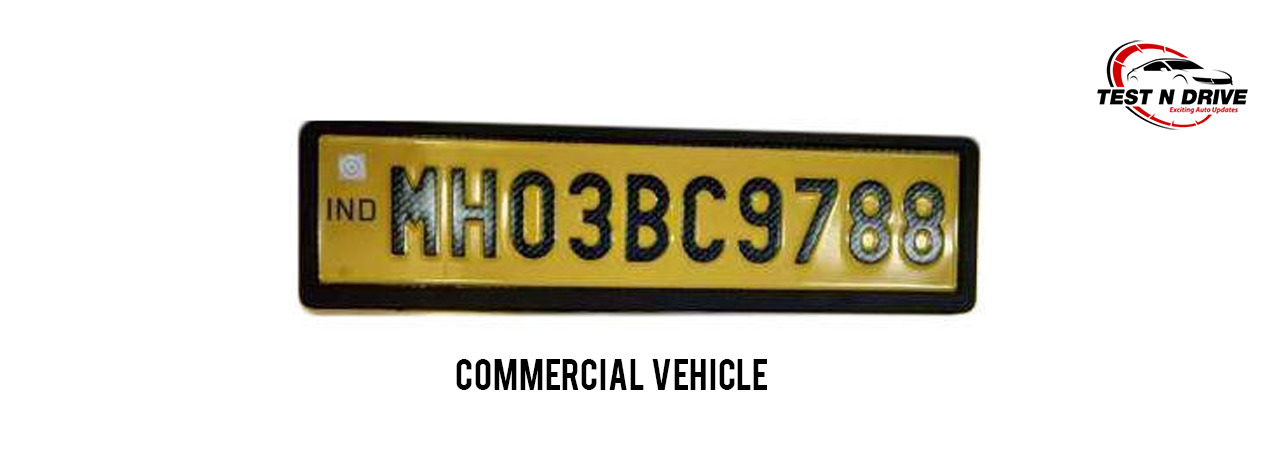
Commercial Car Registration
- Taxis, cabs, and vans are examples of commercial vehicles. The taxation process is different on yellow number plates than white number plates. Also, commercial car drivers with yellow plates need to have a commercial driver’s license.
3. Black number plate with yellow lettering
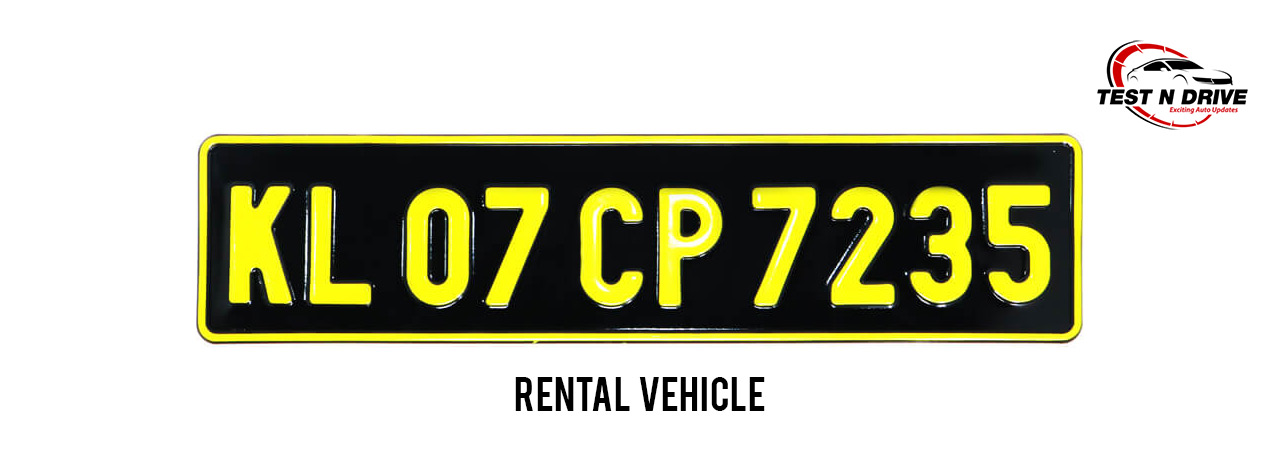
Self-Driven/Rental Car Registration
- Rental or self-driven vehicles get black number plates. These kinds of license plates are also popular in luxury hotel transportation. The driver of these vehicles doesn’t need to have a commercial driver’s license for using these vehicles for commercial use.
4. Green number plate with white lettering
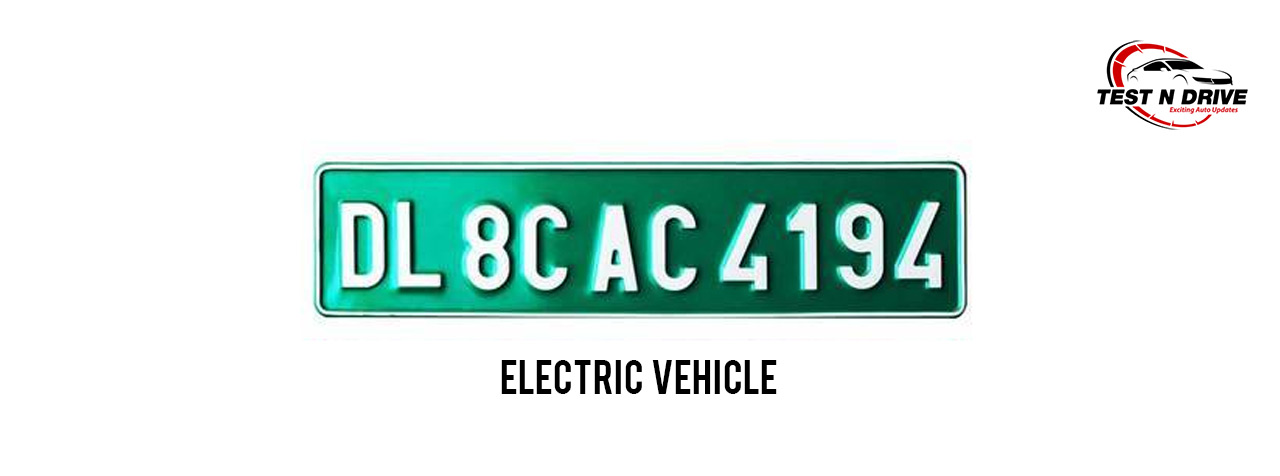
Electric Vehicle Registration
- Only electric vehicles are eligible for this license plate. This is true for electric buses and other commercial electric vehicles allowed on the road (like Mahindra e20, Tata Tigor Electric).
5. Red number plate with white lettering
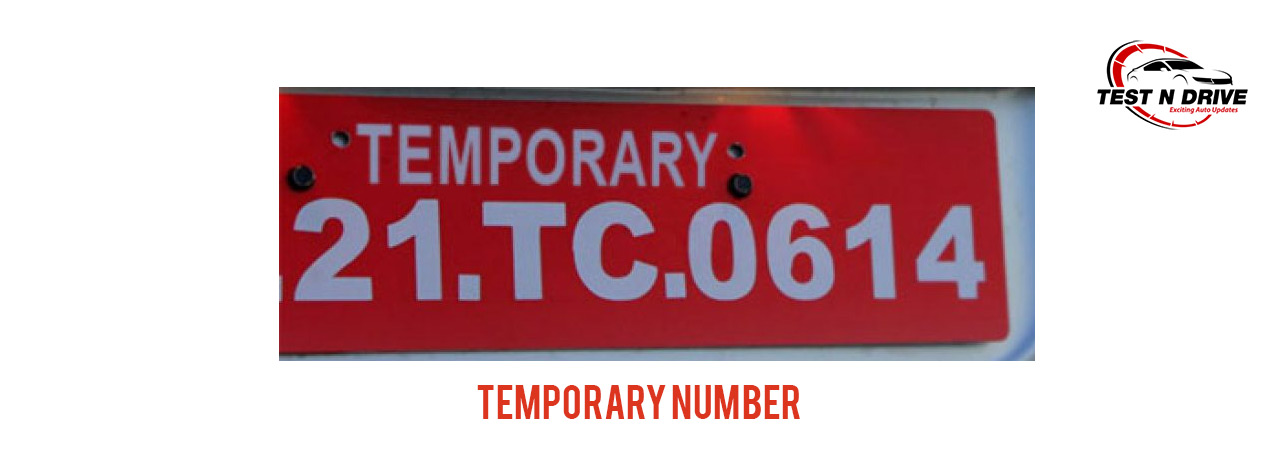
Temporary Car Registration
- The red registration plate serves as a provisional registration for a brand new car before the RTO issues a permanent registration. The temporary registration lasts for one month only. All Indian states, on the other hand, do not allow temporarily registered vehicles to drive on the lane.
6. Blue number plate with white lettering
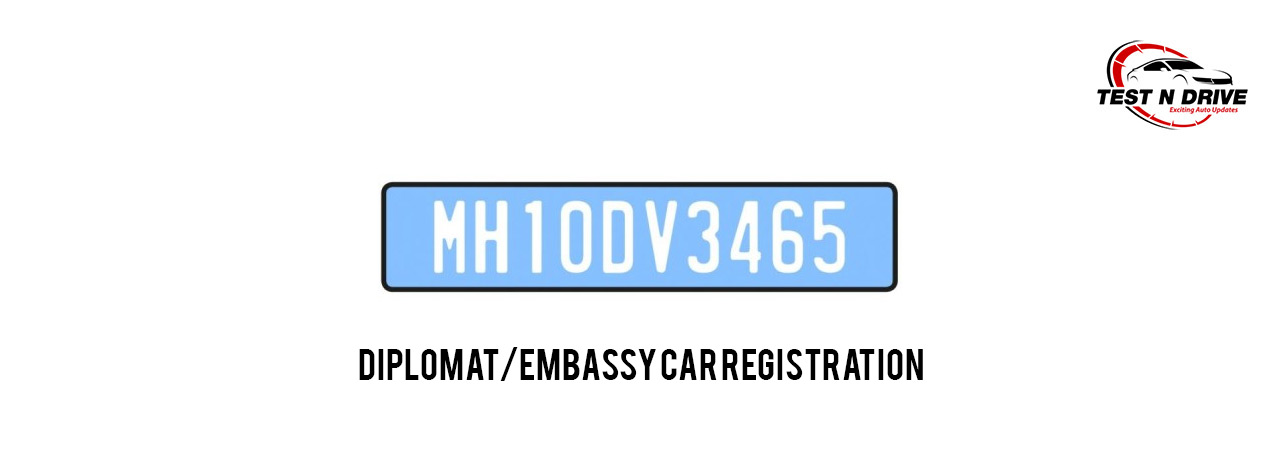
Diplomat/Embassy Car Registration
- A Foreign diplomat’s car has a blue number plate with white lettering from the United Nations (UN), Diplomatic Corps (CD), or Consular Corps (CC).
7. Number plate with an upward-pointing arrow
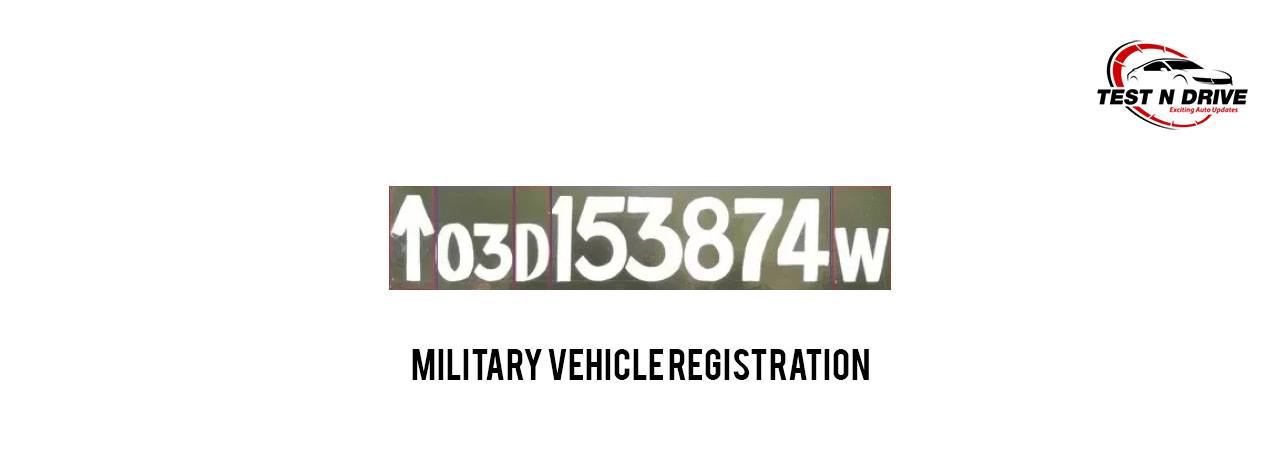
Military Vehicle Registration
- These license plates belong to a military vehicle registered in New Delhi with the Ministry of Defense. A Wide Arrow registration plate is a number plate with an upward pointing arrow at the first or the second character. The digits after the arrow indicate the vehicle purchase year. The serial number then follows the base code. Whereas, the letter accompanying the serial number indicates the vehicle’s class.
Temporary Numbers
Color codes of Indian vehicle registration plates with the temporary license sticker, or TR (To Register) number, are issued by the vehicle’s dealer as soon as the vehicle is purchased. This is valid for one month, after which the owner must register the vehicle.
The regular license plate issuance happens after registration completes with the governing RTO of the residing area of the buyer.
Some states, such as Tamil Nadu, do not allow vehicles with TR numbers to be driven on the road. As a result, the dealer first completes the registration process & then hands over the vehicle.
To register a car, the owner must take it to the RTO’s office, where a Motor Vehicle Inspector will check the applicant’s address and other information.
To issue a Permanent registration certificate (valid for 20 years), the RTO makes sure the engine and chassis number match with the document. A valid insurance card, a pollution under control (PUC) certificate, and a driver’s license are the four essential documents that should with the driver at all times.
Additional documents such as a roadworthiness certificate and a transportation certificate are necessary for public utility vehicles such as buses, trucks, taxis, and pick-up vans.
What Is HSRP (High-Security Registration Plate)?
According to the Central Motor Vehicle Rules, 1989, all vehicles registered after April 1, 2019, must have an HSRP or High-Security Registration Sticker. This also applies to old cars and old registration plates. Since the government only provides these special plates, they help to deter car theft. The Color codes of Indian vehicle registration plate comprises the development of a digitized national database of registered vehicles which are generally considered and maintained with the highlighted and also evaluated and aided by HSRPs
All Indian states require vehicle license plates with high-security numbers. A unique laser-etched code is present underneath the IND (international registration code for India) and the Asoka Chakra hologram. The IND is present at a 45-degree angle on the registration number. Above all, the number plates become unusable if someone tampers the snap locks.
Final Thoughts:
To sum up, as per the Motor Vehicles Act of 1988, all vehicle owners, including you, are required to register their vehicles, according to RTO number plate rules. Moreover, the owners need to display the vehicle number plate on both the back and front sides of the vehicle.
Any violation of this law is considered a desecration of the rule book, and the vehicle’s owner will be fined. The primary reason why a vehicle is assigned a number plate is that it creates a record of the vehicle with the appropriate RTO. Therefore it can be easily tracked if and when required. As a result, the location of the vehicle can be determined if necessary.
If this intrigued you, you might also be interested in the process of RC Transfer in India.

